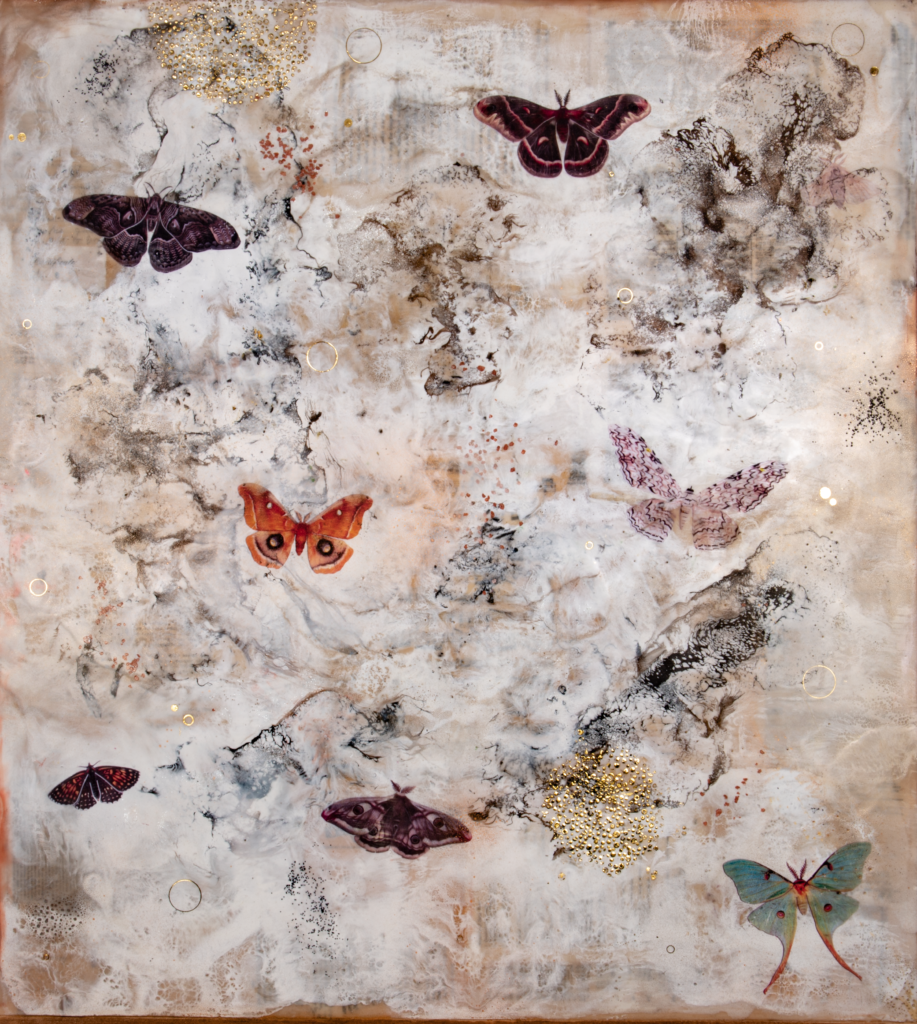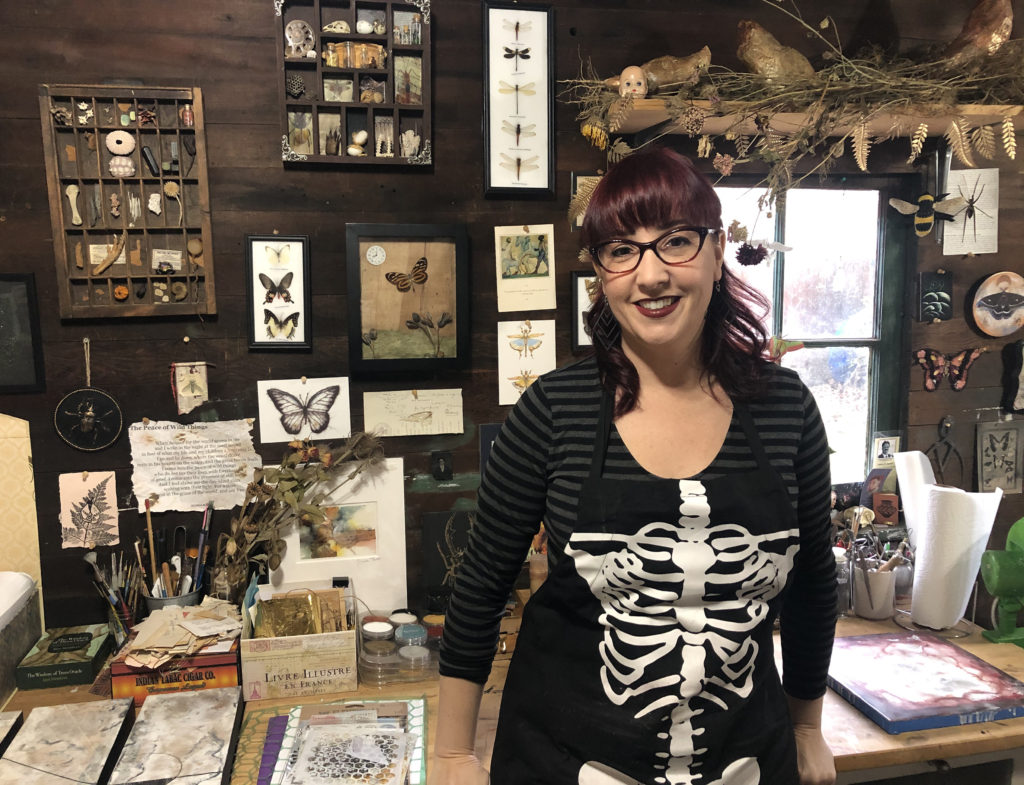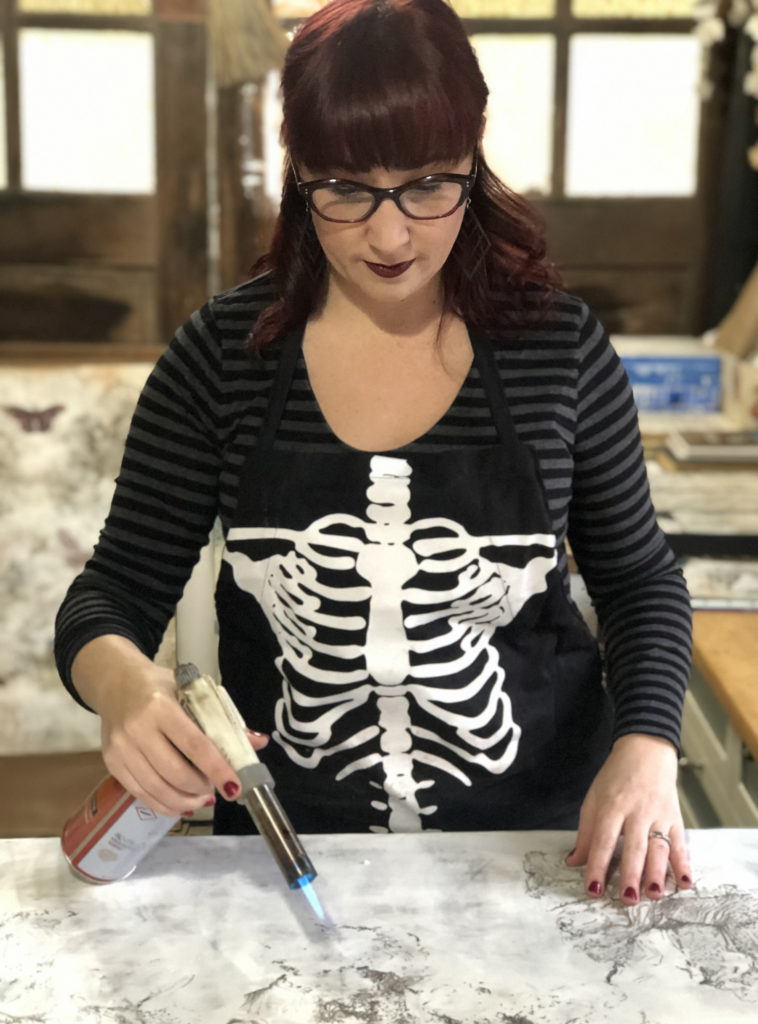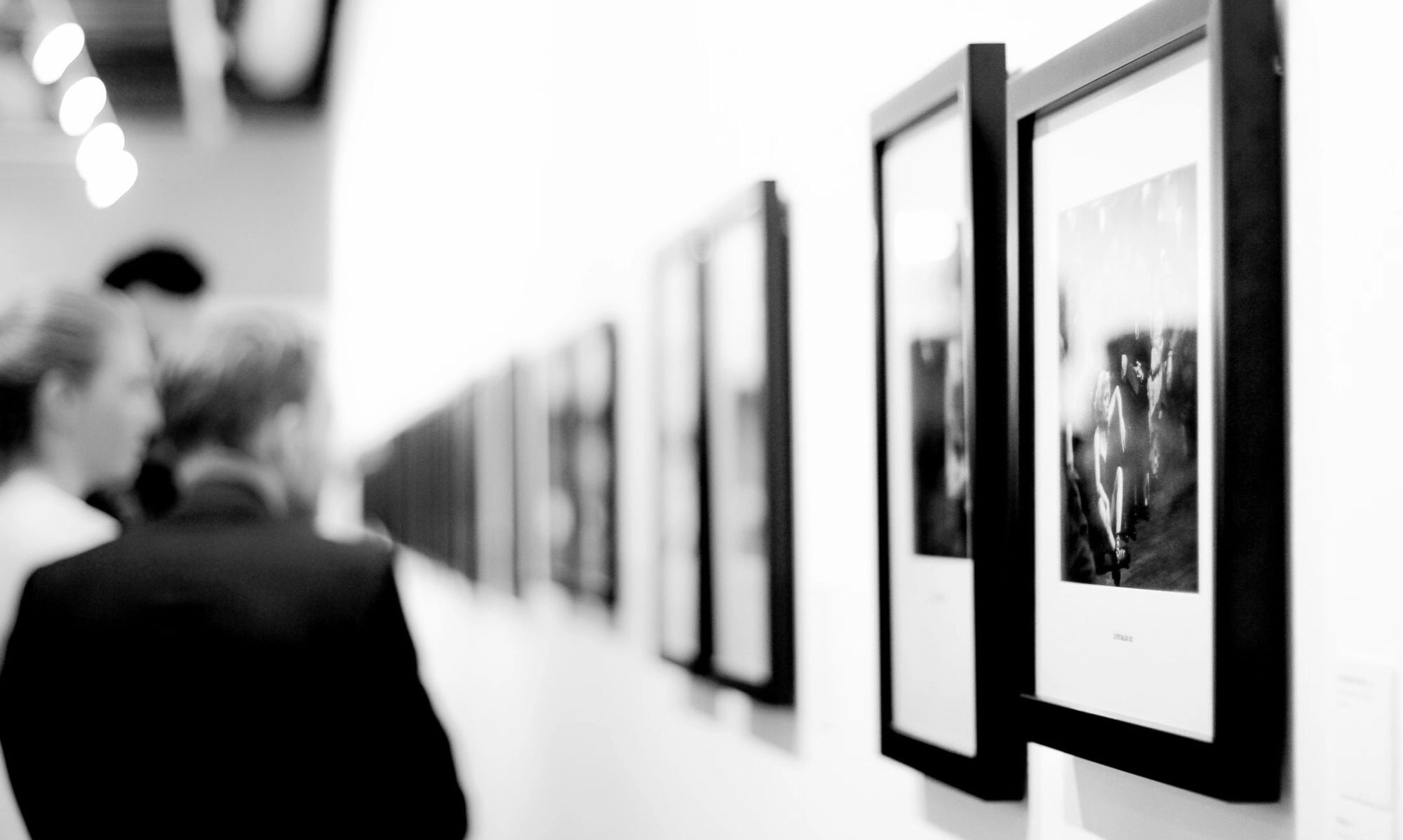31 Women – March 28th: Shannon Amidon

A Curious Place, 2019
Encaustic
Shannon Amidon always knew she loved creating and making things. In college she discovered photography and fell in love with the medium and the dark room. Having no formal training or skills in drawing or painting, photography was a natural and exciting way for her to express herself. She took photography courses, including an alternative process photography class with Brian Taylor at San José State University, which became a profound influence. Over the years Amidon’s practice changed and evolved significantly, but she says her “first love and roots will always be in photography.”
Broadly Amidon’s artwork explores themes of nature, science and our environmental impact. The cycles of life, death and impermanence play a primary role in her work. Amidon feels that art should be an investigation similar to science, by asking questions, researching and seeking to see things in new or different ways. Curiosity is fundamental in her practice. As the cycles of life, curiosity, discovery and science inspire Amidon, so does the act of making art. Among women artists, she is drawn to the work of Eva Hesse, admiring her dedication to material and process. She is also encouraged by the work of Neri Oxman and Zaria Forman and sees them “really pushing the boundaries and shining a creative light on climate change and the environment.”
Several significant life experiences, both personal and professional, have impacted Amidon’s work. The dualities of life and death, as well as becoming a mother as she lost her own, significantly changed her practice, color palette and the meaning of her work. Amidon explains that her “art went through a complete sea change. Most surprising is that it didn’t make it darker or melancholy, in fact observing and experiencing these cycles of life firsthand gave my work more hope, lightness and depth.”
An Interview with Shannon Amidon
MKM: Tell me about your childhood, where did you grow up? Were you always creative?
SA: My childhood was spent immersed in nature on an 1800’s nonfunctioning dairy farm. We were a family of 6 sharing a two bedroom, one bathroom house with no heating. At times I had a very difficult childhood. I grew up in a very poor family with parents who were both drug addicts. They were both very creative and in their own ways tried to give us what they could. Despite the challenging living situation, at times it was a magical place to grow up. I often spent my days escaping into nature, climbing trees, sliding down the foothills on cardboard, playing in the creek catching tadpoles and frogs. I would dig up rocks, pick wildflowers and shake the cherry blossoms from the plum trees to make it snow. We had all kinds of creatures who would visit, deer, skunk, possum, snakes, and more. This experience seeded a deep connection with nature and an insatiable curiosity to learn what I can about natural history. I was always creative, and my parents were very supportive of me expressing myself in many different outlets. We never went to galleries or museums growing up and I didn’t really have an idea of what fine art was. But, I always knew I loved creating and making things. My Mom always liked to tell a story about a time when I was a kid and took all of the silverware from the house and hung it from the tree in the backyard. I was always creating these little art installations having no idea of what that even was.

MKM: Why did you pursue art?
SA: In some ways I feel like I was a late bloomer in art. I was not one of those kids who always knew they wanted to be an artist. I loved to create and express myself, but I didn’t always know how. I never even took any art classes in high school. It wasn’t until I graduated and started going to college that I discovered photography. My boyfriend at the time (now my husband) had a really nice camera and let me use it and encouraged me to take a photography class. I fell in love with the medium and dark room. Having no formal training or skills in drawing or painting, photography was a natural and exciting way for me to express myself. I took all of the courses I could and eventually moved into alternative processes. For me they were a way to take what can sometimes be a cold medium and inject the artist’s hand. I always felt more like an artist than a photographer. I would paint on emulsions, print on fabric, wood and other substrates and experiment with cameraless techniques. From there I couldn’t stop, I found my purpose and there was no going back. I have tried many mediums over the years and my practice has changed and evolved significantly; however, my first love and roots will always be in photography.
MKM: Where did you study?
SA: West Valley College and San Jose State University. Although I am mostly self-taught in fine art.
MKM: Did you have any memorable art teachers?
SA: I took an alternative process photography class with Brian Taylor (SJSU) that really influenced me. He was such a generous and encouraging teacher and an incredible artist. His artwork opened a whole new world for me. A more mixed media approach to photography.
MKM: When you’re creating what’s your daily routine? Rituals, patterns?
SA: I’m a morning creator. After my coffee I go into my studio where I turn on all of my lights, my music and put my apron on. Then I turn my wax on because it takes a while for it to melt and be ready to work with. Encaustic is a very physical medium, so I always try to do some stretching to warm up before I start. I usually work on the actual art making & painting for about 4-5 hours at a time. I am a very process oriented artist and my paintings take a lot of prep before I can actually start painting. There is a lot of research that goes into my artwork and then surface prepping, medium making, and image processing.
MKM: How has your practice changed over time?
SA: My practice significantly changed when I had a child. I became more focused and had to learn how to prioritize and be a lot more efficient with my time. Even though my creative time was drastically cut, my creativity, dedication and output actually went up.
MKM: Do you focus on a specific medium or combination of mediums? Which creative medium would you love to pursue but haven’t yet?
SA: For the last 10 years I have been focused on encaustic. It is a medium that is so versatile and yet can still be challenging to work with. It’s never boring and continually pushes me and my technique. I enjoy using it in a mixed media way, incorporating paper, oil paint, pan pastels, mica, golf lead and more. But the encaustic paint is always the main material. I have always wanted to be a sculptor, ceramic or glass. I love the idea of creating 3d art and those mediums fascinate me. I follow a lot of sculptors on social media and buy all the glass making, sculpting and ceramics magazines and daydream about what I might create.
MKM: What themes do you pursue?
SA: Broadly my artwork explores themes of nature, science and our environmental impact. The cycles of life, death and impermanence play a primary role in my work. I feel art should be an investigation similar to science. It is about asking questions, researching and seeking to see things in new or different ways. A major factor in my practice is curiosity. I am interested in all aspects of ecology and the natural world and while I can’t know or learn everything, art allows me to discover and study these areas of knowledge without specialization. As I progress along my artistic path, I become more and more aware of the importance of ecological issues. It is very important for me to have a sustainable and environmentally friendly practice by using all natural and repurposed materials. I also hope to inform and possibly educate people about environmental issues with my work.
MKM: What is your most important tool? Is there something you can’t live without in your studio?
SA: I can’t live without music in my studio. I can often tie specific albums or song to my different series of artwork. Music is vital and often elevates my mood and motivates me. My most important tools are my hands, torch and loop scraper.

MKM: Is there an artwork you are most proud of?
SA: That’s a difficult question. I think it always changes and is usually my most recent creations. Right now, I am really proud of a 300-piece monarch inspired installation I recently created. When I started it, I had no idea how it was going to turn out. I loosely sketched it out but had no way to really do a test install to make sure it was going to work and look good. I had to do a lot of research and trial and error on how to create and install it. It was the first time I had ever done anything like that and spent about 8 months on it. I didn’t know what the layout was going to be until 2 days before it was to be installed. Everyone kept asking me how the pieces were going to be put together and I didn’t know until I knew. I just had to trust myself and the process. It turned out better than I could have imagined.
MKM: What has been a seminal experience?
SA: There are several significant life experiences that come to mind, both personal and professional. I was deeply impacted by a number of heartbreaking deaths and the awe-inspiring gift of life. From 2010 – 2017 I lost seven loved ones, including my parents and grandparents. During this time, I also became a new mother to an amazing daughter. This duality of life and death as well as becoming a mother as I lost my own, significantly changed my practice, color palette and the meaning of my work. My art went through a complete sea change. Most surprising is that it didn’t make it darker or melancholy, in fact observing and experiencing these cycles of life firsthand gave my work more hope, lightness and depth. Professionally there are countless high points along my path as an artist that have impacted and informed my practice. Attending my first artist residency in Costa Rica in 2010 was a huge turning point for me and my practice. It opened a new world by giving me the time and space to create without distractions, obligations or pressure. I was bitten with the residency bug and have attended many local and international residencies since then which have all positively contributed to my practice. Being selected to create three large public art pieces for San Francisco General Hospital creatively pushed me in ways I could not have imagined. It allowed me to learn new ways of working large scale and sculpturally that I had never done before. It opened a number of doors with corporate and private collectors and gave me the courage and confidence to apply and reach for opportunities and goals out of my comfort zone.
MKM: What art do you most identify with?
SA: Assemblage and mixed media art. The first artwork that I really connected with was Joseph Cornell.
MKM: What inspires you? Other artists, other women from history, your process, a theme?
SA: Life inspires me. Curiosity and discovery, natural history, science. Also, just the act of art making itself inspires me. For me the art is the process of creating, not necessarily the finished piece.
MKM: Do you have a sense of connection to a particular woman artist from art history? Is there a specific work from this artist that you find interesting?
SA: I am really drawn to the work of Eve Hesse and her dedication to material and process.
MKM: Who are your female role models from history or present day?
SA: Right now, I am inspired by Neri Oxman and Zaria Forman. I feel they are really pushing the boundaries and shining a creative light on climate change and the environment.
MKM: What’s the best piece of advice you’ve been given?
SA: Be patient and trust the process. It’s something I often have to remind myself.
MKM: What is your dream project? What can we expect from you in the next year?
SA: One big dream project is to start an eco-friendly artist residency. Particularly one that accommodates parent artists and their children. I love participating in artist residencies, after I had my daughter, I found the opportunities for doing that were significantly reduced. I can’t leave my family for a month or more and there are few opportunities to bring your family with you. Artist residencies have had a significant impact on my career and process, and I think it’s so important to provide them to parents as well. One of the reasons I recently moved to Portland, Oregon was to pursue this dream. I am slowly taking the steps to make this happen. This next year I hope to create more large scale multi piece encaustic installations. I really enjoy creating them and hope to find a space where I can install and share them.

